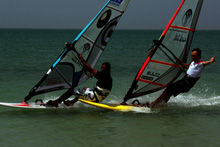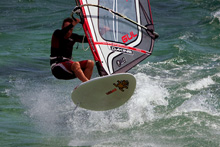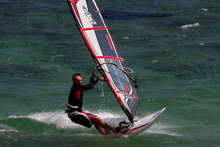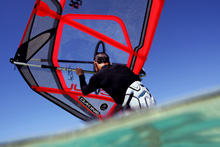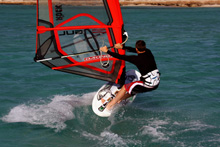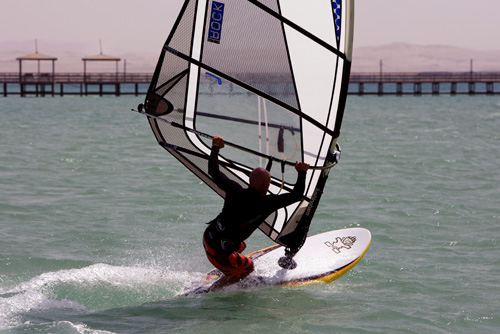
Can’t gybe? Don’t worry, you stand a very decent chance of duck-gybing! Simon Bornhoft breaks down this seemingly elusive ‘trick’ to make it achievable – regardless of your level. Photos: Karen Bornhoft / WindWise
If you had two cloned intermediates and one focused just on gybing and the other just on duck-gybing, the odds are that the duck-gyber would learn their move the quickest and be most likely to plane out too. Despite limiting beliefs, my tests have proved that duck-gybing can actually be easier to learn than gybing. In fact, when someone comes on a course and dedicates decent time to light wind skills and drills and then makes 40-50 duck-gybe attempts in planing winds, the success rate is very high. I’m not talking about advanced sailors, either. If you can blast in the straps you can duck-gybe! Here’s how…
Skills & Drills
Session 1: Sail 180s.
Session 2: Switch-stance.
Session 3: Non-planing duck-gybe – involving our ‘upwind-downwinder’, ‘sail 180s’ & ‘switch-stance’ skills and drills.
Session 4: MAKE YOUR MOVE – the fully planing duck-gybe!
Key Principles
Exaggerate and commit to our WindWise Principles, adding finer detail to speed up MAKING YOUR MOVE!
Vision: Look forward and through the turn to where you want to go.
Trim: Adopt a wide foot spread to steer and lever the board.
Opposition: Rig moves one way, you move in the opposite direction (and vice versa).
Power: Wide arm spread, pulling down on the boom before and after ‘ducking’.
Stance: Going and out of the turn, adopt a super-7 ‘drop-&-push’ stance with flexed back leg and extended front leg.
Build your skills, confidence and neuromuscular propriaception (muscle memory) by trying the following sessions on land first then using a large enough board to uphaul with a sub 6.0m rig on the water.

